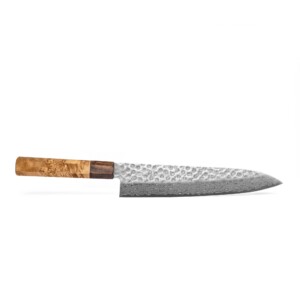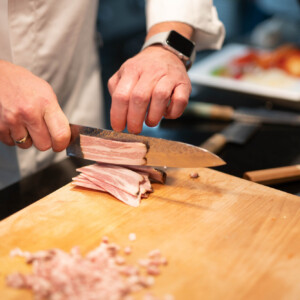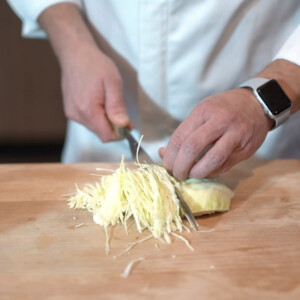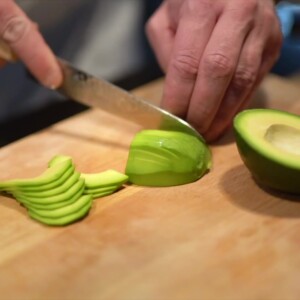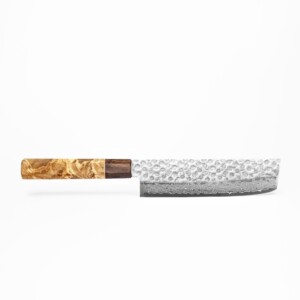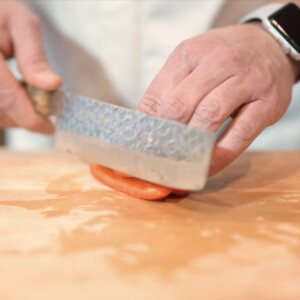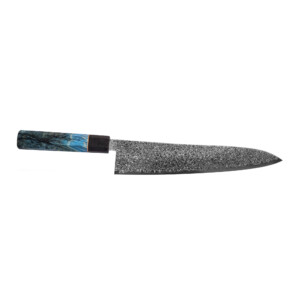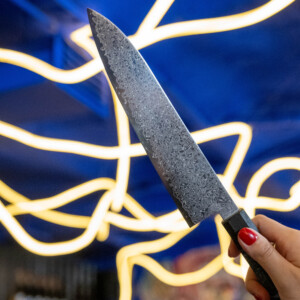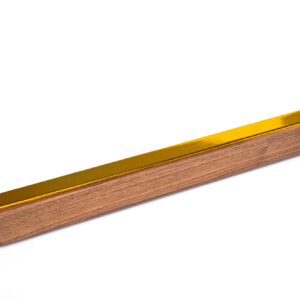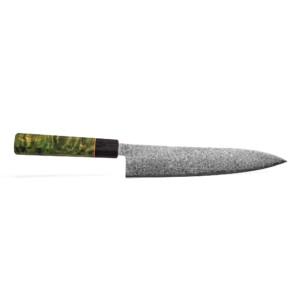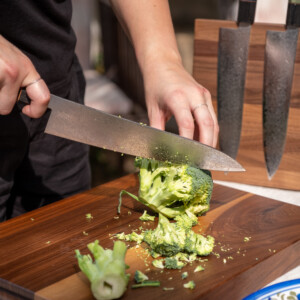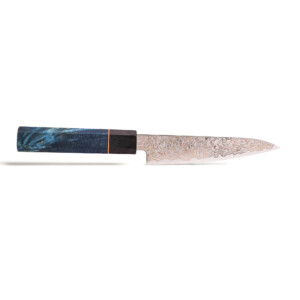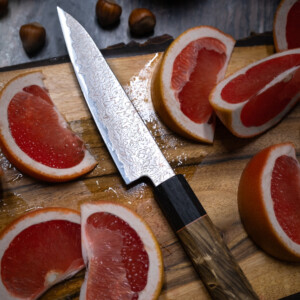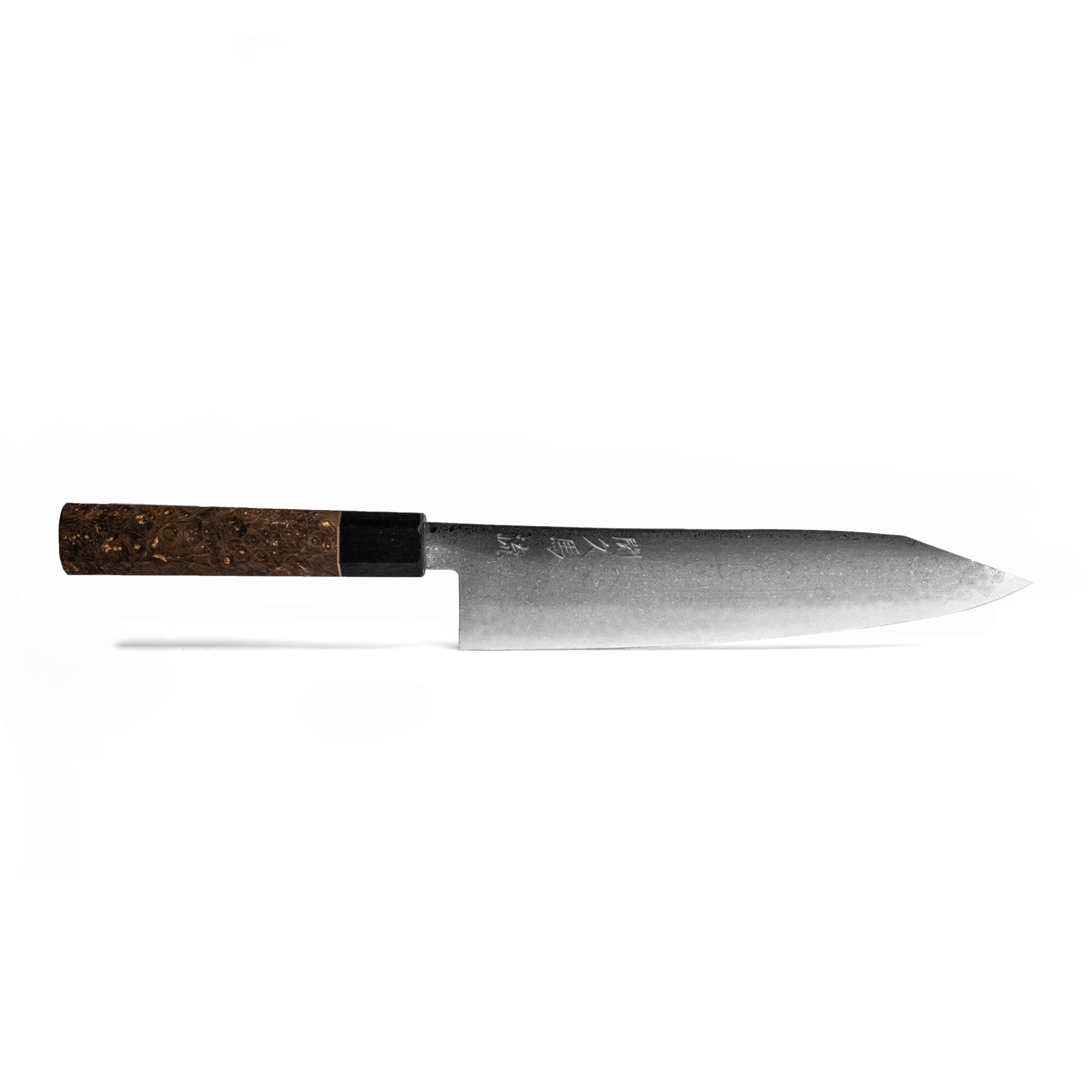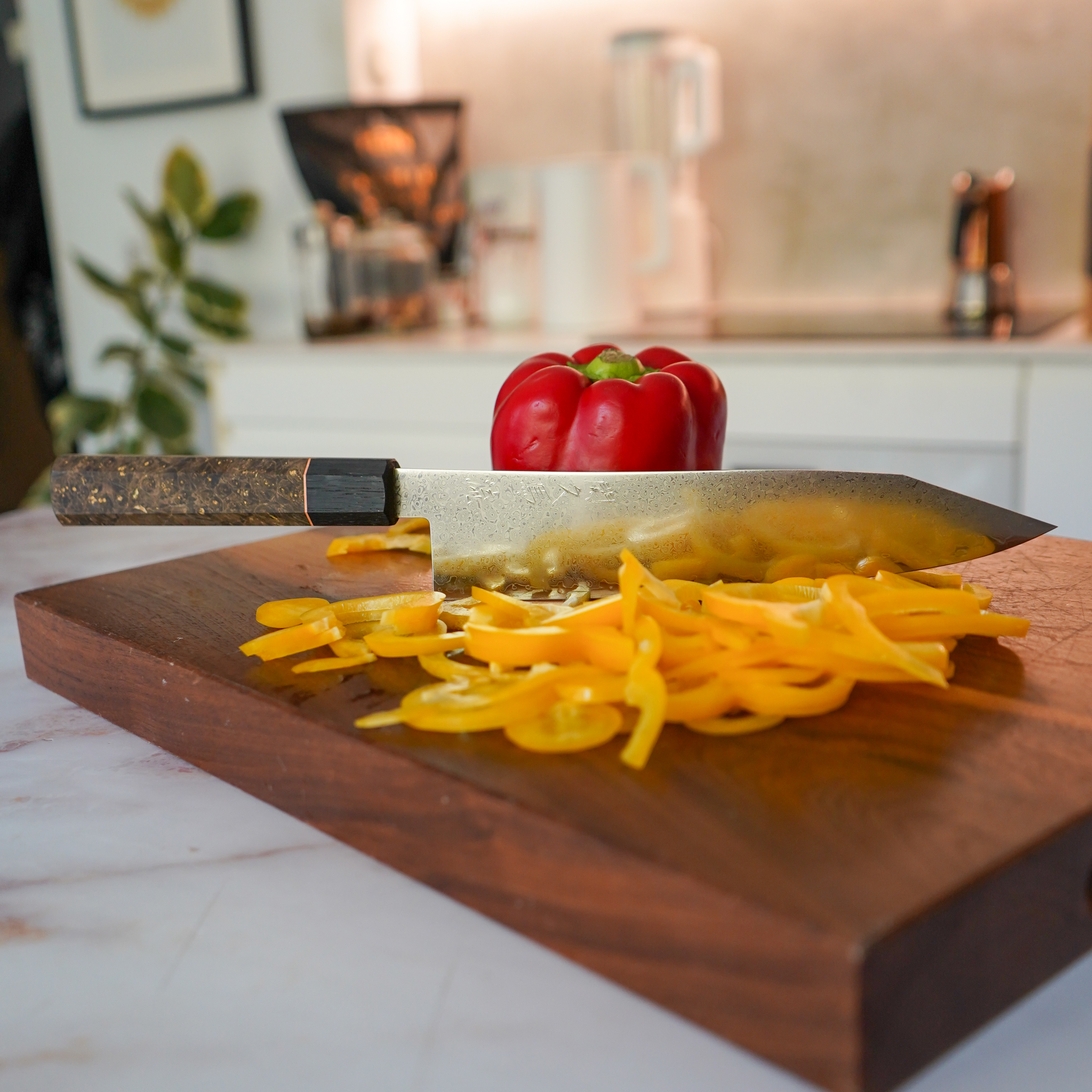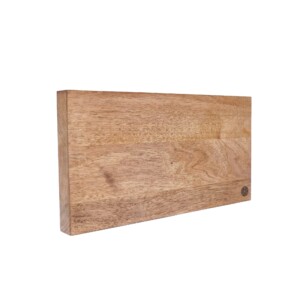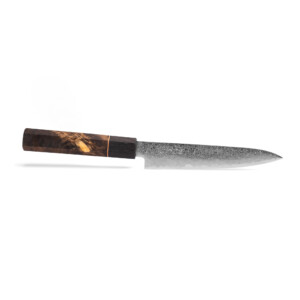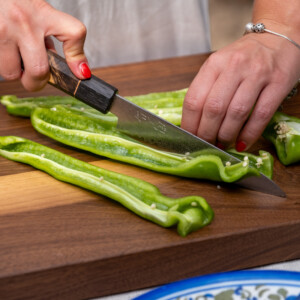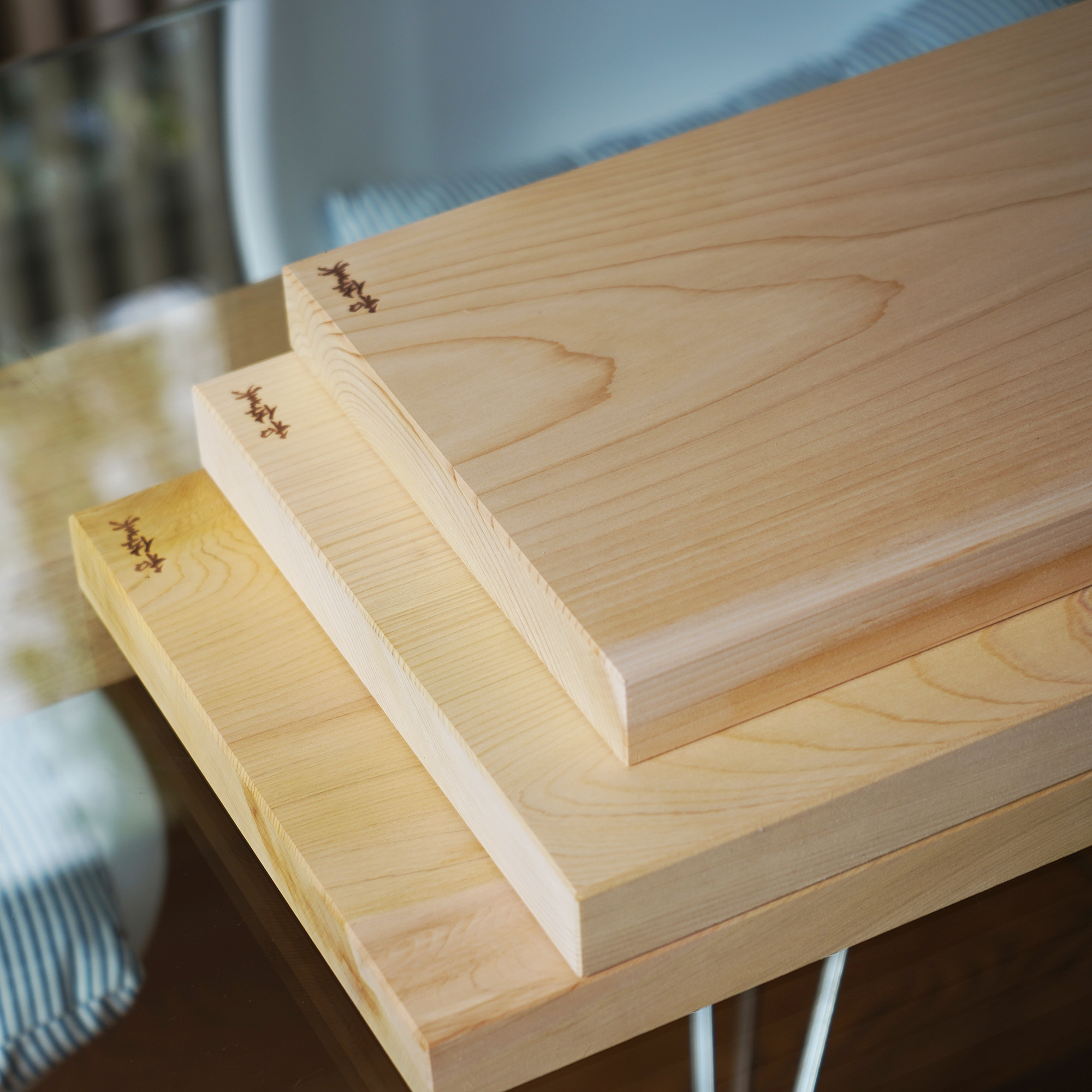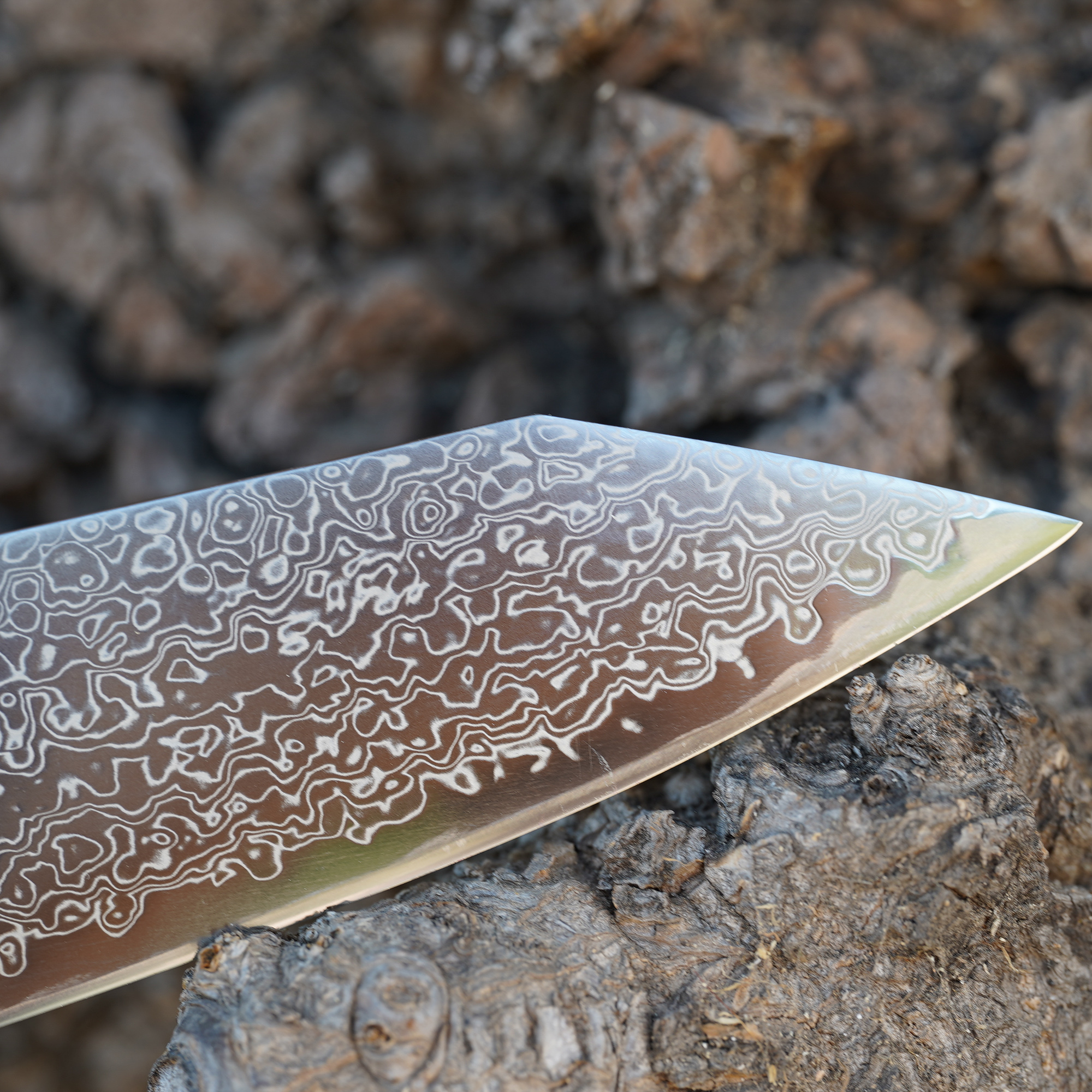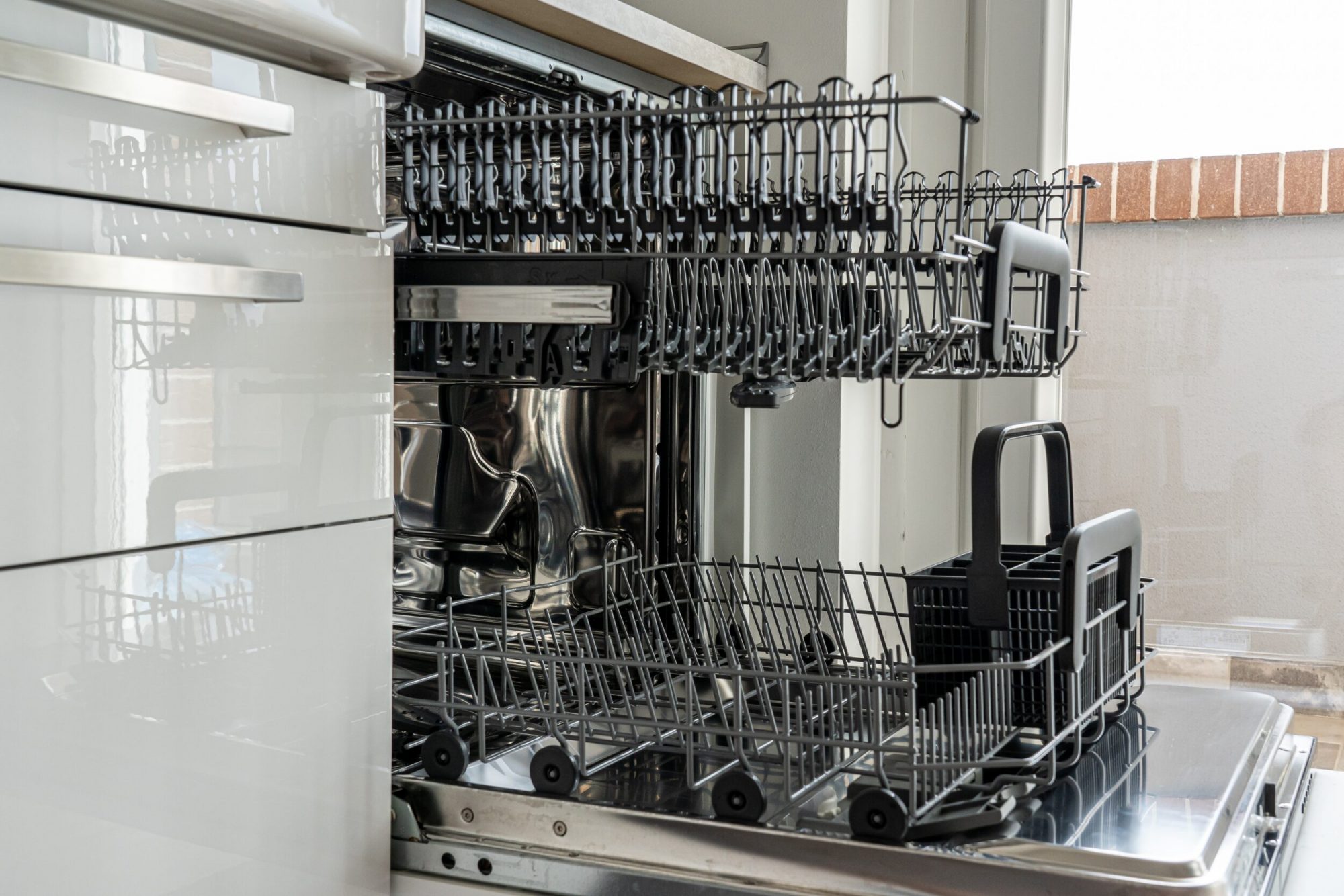Knife Handle Materials
Wood Handles

Sakai Kyuba Kitchen knives have stabilised maple wood handles dyed in different colours.
Wood had been used as a knife handle since knives came into existence. A good quality wood handle can be durable and attractive, making wood a relatively inexpensive material for heavy-duty knives. Wood also adds a lot of beauty to a knife, making wood handled knives popular among collectors.
Various different types of woods are used in knife handles, so you have to choose wisely based on how, how often and where you’re going to use the knife. If you are going to use it in wet conditions often, you don’t want your knife handle to be made of soft or fine woods like black walnut; better to use hardwood or a stabilised wood, where the wood is injected with plastic.
Wood also makes it extremely easy to carve artsy designs and create handles, unlike any other types. Some of the common types of wood used for handles are cocobolo, ebony and rosewood (shitan). Of course, there is a wide variety of pricing among wooden handles depending on the type and scarcity of the wood used.
Wood does have a number of drawbacks that you should keep in mind when thinking about buying a knife with a wood handle. The biggest factor is its maintenance. Wood is difficult to clean and harder to maintain as it can be damaged easily.
Hardwoods originate from deciduous trees whereas softwoods largely come from coniferous trees. There are hundreds of so-called exotic hardwoods used in knife making today and each displaying unique characteristics that excite us as knife collectors.
Examples of stabilised woods include are plywoods typically made from birch. Manufacturers inject polymer resin and then compress under high pressure to create a very dense and durable material that still exhibits natural beauty.
Pros: Lots of variety, attractive, durable, very comfortable to hold
Cons: Porous if not stabilised, rare woods can be pricey
Micarta® Handles

Micarta is a popular branded example of a phenolic, which refers to different substances made with the organic compound Phenol – a type of resin. This type of resin is a synthetic material that is a composite of linen or paper.
Thin layers of linen cloths are soaked in a phenolic resin, producing a product that is lightweight, strong, and looks more aesthetically attractive than similar materials. It was originally introduced as an electrical insulator and easily one of the best plastics out there for making knife handles.
Unfortunately, Micarta in and of itself has absolutely no surface texture, is very slippery and smooth, and requires quite a bit of hand labour to produce and then carve some sort of texture into the knife. This makes it pricey, which translates to a higher priced knife. Many will tell you that Micarta can be easily scratched but fortunately, this is not the case. Micarta is very hard and is not easy to scratch at all. If enough pressure is applied e.g. scratch under attack from sharpened steel, then it may get leave a mark, just like G-10 and carbon fibre, will but in general it holds up very well.
It also comes with many different colours, such as black, white red, tan and other bright hues.
Pros: Tough, light, durable
Cons: Expensive, brittle
Metal Handles

Metal is a very popular choice for handles because of its durability and strength. There are two common types of metal typically used for knife handles titanium and stainless steel. The benefit of stainless steel is that it’s resistant to corrosion but is not particularly lightweight. In addition, stainless steel handles can be rather slippery so manufacturers have to incorporate etching or ridges to provide the required friction. Quite often, you’ll see stainless steel used in combination with plastic or rubber, to improve the grip, but stainless steel handles should be avoided in the kitchen or heavy-duty knives, because of the added weight.
Titanium is similarly corrosion-resistant and lightweight but has a higher threshold to withstand tension. It’s a little heavier than aluminium but still considered a lightweight metal and much stronger. Alas, it’s also more expensive to machine.
Titanium is one of those rare metals that has a warm feel to it, so it doesn’t make you suffer nearly as much in the winter time as something like aluminium. It’s very sturdy and yet springy, which is why you commonly see titanium used as the liner material for a locking liner knife. Note that both Titanium and Aluminum suffer from being prone to scratches as compared to stainless steel.
Titanium can be given a unique and attractive colour through the anodization process which is particularly common on custom knives and it can be texturised through bead-blasting.
Chefs stay away from these types of handles because if they’re near a flame for too long, they can become scorching hot.
Stag Handles
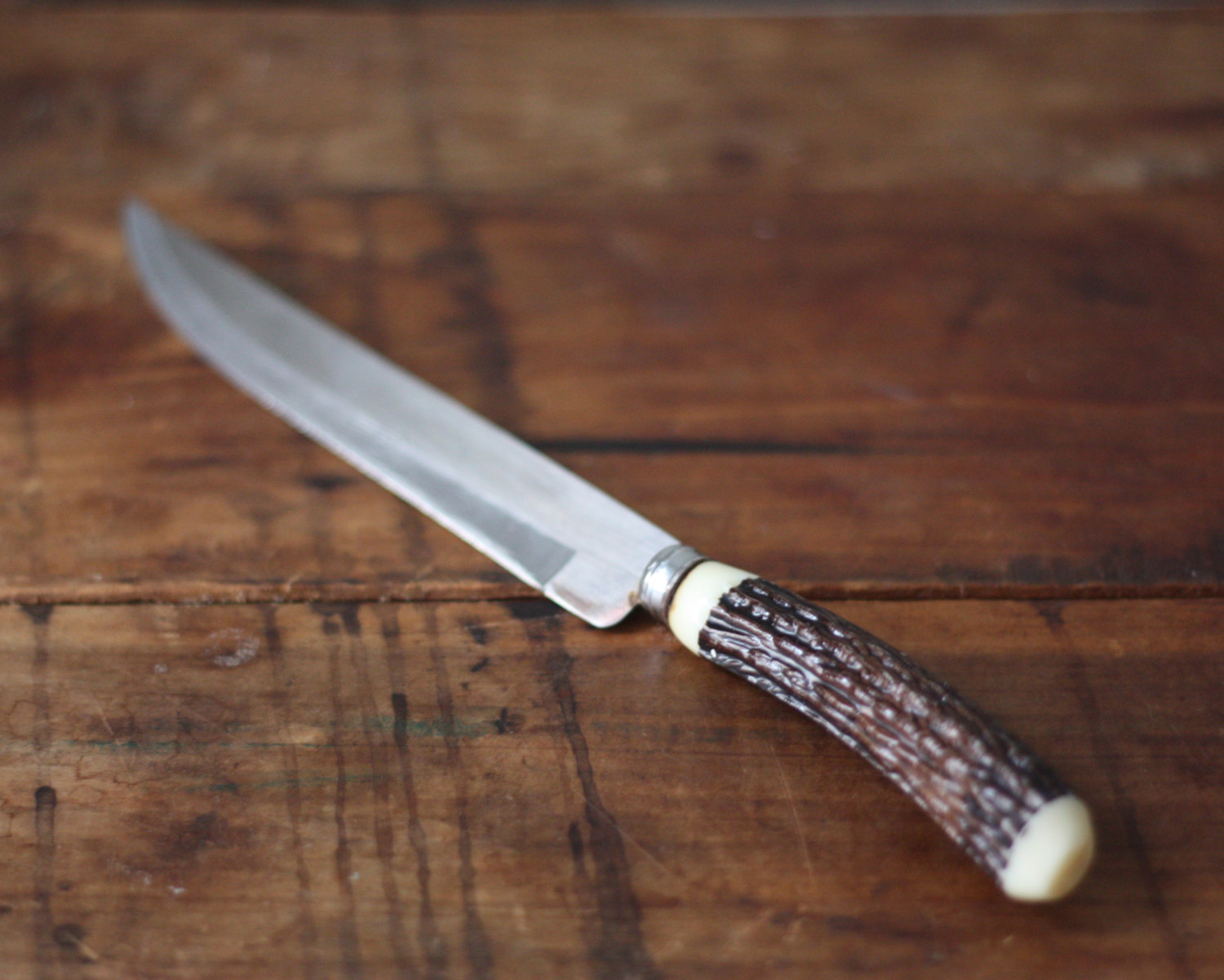
Stag handles are made out of naturally shed deer antlers, which makes these handles increasingly rarer and costlier. Two of the major advantages of the stag is that the rough texture makes a sturdy grip and the shape of the antler gives it natural curves.
Pros: Tough, durable, natural curves
Cons: Lacks elegance, causes pain to the animals
Bone handles

Bone handles have been used since the dawn of man and are still very popular among the knife collector community; in fact, this is the most common material today for classic pocket knives. 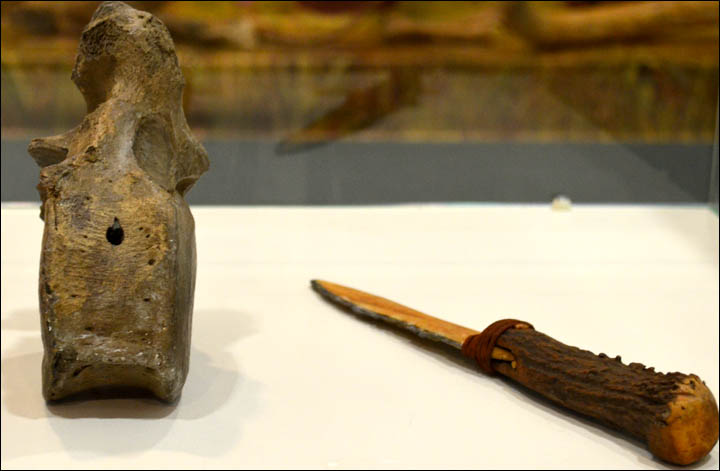
The bone is derived from naturally deceased animals and a wide variety of animals at that—including elephant and giraffe. Still, the most common and cost-effective bone used today is the abundant cow bone. Aside from bone, similar materials like antler (deer, elk, etc.), horns (sheep, cow, buffalo, etc.) and tusks (i.e. elephant, walrus) will often be used. Of course, many collectors like bone handle simply because of tradition. The bone can be dyed to achieve bright colours and can be textured to make for an easier grip.
Unfortunately, bones handle is somewhat slippery for heavy-duty usage and it’s porous which affects its stability and makes it susceptible to deformation and cracking. Temperature, light and moisture can all impact the characteristics of a bone handle which makes them unsuitable for many.
Pros: Often inexpensive (cow bones), use of dyes create eye-catching designs, traditional
Cons: Porous, susceptible to cracking, somewhat slippery
